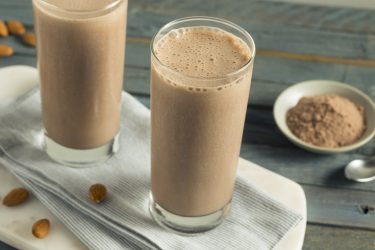What’s happening in the chia market?
- Like
- Digg
- Del
- Tumblr
- VKontakte
- Buffer
- Love This
- Odnoklassniki
- Meneame
- Blogger
- Amazon
- Yahoo Mail
- Gmail
- AOL
- Newsvine
- HackerNews
- Evernote
- MySpace
- Mail.ru
- Viadeo
- Line
- Comments
- Yummly
- SMS
- Viber
- Telegram
- Subscribe
- Skype
- Facebook Messenger
- Kakao
- LiveJournal
- Yammer
- Edgar
- Fintel
- Mix
- Instapaper
- Copy Link
Posted: 25 October 2019 | Dr Stefan Siebrecht | No comments yet
No longer a novel food, chia protein is challenging current market perspectives and increasing pressure on early stage supply chains – especially when quality is integral to product development.


The chia boom has been developing for years, and with growing consumer interest in healthy, untreated foods, ingredients such as chia, matcha and olive oil have become standard products in kitchens, food stores and wholesalers.
And rightly so; chia seeds are nutritious, being rich in both fibre and protein and containing a complete essential amino acid profile that is only available in a few plant-based raw materials. It is also, of course, vegan friendly with a high concentration of essential omega-3 fatty acids, including six percent alpha-linolenic acid (ALA) and 1.94 percent omega-6 linoleic acid – these essential fatty acids inhibit inflammation and positively affect cholesterol levels, lower blood pressure and support brain functions and metabolic processes.
Quality control issues and food fraud should not be underestimated”
Yet there are always challenges. In the country of origin where the raw materials are grown and harvested – ie, the source of the supply chain – both quality control issues and food fraud should not be underestimated.
New participants in the chia business
It is a farmer’s right to base their livelihood on products that have high market demand. Chia plants, originally from central and South America, also thrive in other regions, such as Africa. As early as 2017, the German economy magazine Handelsblatt reported rising import figures from Uganda to Germany.1 The price that African farmers are paid for chia seeds is significantly higher than, for example, maize; yet it is more crisis-proof because the plants are more resistant to extreme weather conditions and less expensive to cultivate.
However, the chia business is a risky one: according to the Handelsblatt article, overproduction in Mexico has already led to increased price pressure and competition could increase further if varieties are bred for regions with different climatic conditions. Yet, for buyers in the food industry there is another, more urgent topic, namely food fraud.
Stretched additives reduce quality
What is normal for tea products also applies to chia: fillers and undeclared — intentional or unintentional – non-food substances reduce product quality and in extreme cases can be harmful to health. Even by using a simple magnifying glass, contaminants can be identified in commercially available chia products, such as seeds, small stones and branches (Figure 1). Keeping with the tea comparison, matcha is often filled with cheaper or substandard ingredients. In addition, the pollutant load of some teas may pose health risks when consumed intensively. In July, the German Federal Institute for Risk Assessment detected excessive amounts of aluminum in three matcha tea samples.2


Figure 1: A look under the magnifying glass quickly reveals how many contaminants (right) there are in a standard seed bag (left). (Copyright Taiyo)
It is therefore imperative, as an ingredients company, to have control over the entire supply chain. This approach requires significant investment and enormous effort, but we believe that it is the only way to produce raw materials of the highest quality.
Meanwhile, there are many concerted efforts that aim to prevent food counterfeiting. Since 2011, Europol and INTERPOL have been acting against food fraud as part of the worldwide OPSON project.3 In fact, a total of 77 countries from all over the world took part in OPSON VIII this year. The overarching objective of Operation OPSON is to establish and strengthen collaboration between the authorities responsible for food control and consumer protection, the national and international law enforcement institutions and the local customs offices.
Analytics plays a key role here. In many cases, however, this takes place after the raw material has arrived in the importing countries; apart from the analysis and potentially complex purification processes, companies have limited control. One approach is to select suppliers wisely and ensure through ongoing site inspections that the contractually agreed quantity is actually grown and delivered – and that it is of the required quality. Incorruptible, competent personnel are also a prerequisite. However, if you look at the complex producer market, this is easier said than done.
Quality beats price
The fact that quality in the process chain justifies a higher price can also be observed on the other side of the globe. The world’s largest chia seed supplier, Benexia from Chile, offers a purity content of 99.95 percent on the basis of sophisticated sorting and cleaning processes – a value that can only be achieved under quasi-pharmaceutical production conditions.
Quality management begins with traceable seed selection for contract farming, which is carried out by a group of selected partner farms in Bolivia. With the aid of a specially developed chemical-free sterilisation process, the critical parameters of moisture and microbial content are reduced to an absolute minimum. At the same time, the process triggers enzyme activation and the shelf life is extended by pasteurisation. Contamination with other substances or food allergens is prevented as the production plant is used exclusively for chia seeds. Halal, Kosher and organic (according to EU and US standards) certifications are also available. In addition to the whole seeds, which are offered ready-to-eat, Benexia also produces a finely ground chia powder. This is not obtained from the press cake, which is produced during oil pressing, but from ground seeds that have undergone the aforementioned cleaning and sterilisation process. Thanks to a special Ox Blocker® technology, the chia oil, which is also available, is extremely stable against oxidation and therefore has a much longer shelf life than competing products.
Stability, shelf life and approvals
In fact, the physiological benefits, processing and saleability of nutritious seeds and their related products – oil and powder – depend on the stability of their ingredients. Fatty acids are sensitive to oxidation and quickly become rancid. A further complication is the formation of acrylamide, which can occur in the case of overheating. This natural consequence of the Maillard reaction is one of the reasons why chia seed powder – at least in Europe – is not yet officially approved for use in bread and bakery products, while it is in Latin America.
However, if the powder is not heated above 42°C during the production process, this impairment can be ruled out. Possible applications in this instance include raw vegetable bars or energy balls with dates, nuts and other nutritious ingredients.
A similar imbalance exists with chia oil, which is considered to be a food supplement (NEM). Here, it is the omega-3 fatty acid content that is critical, so the maximum daily dose, according to the European Food Safety Authority (EFSA), is 2g. For comparison, linseed oil contains similar amounts of omega-3 fatty acids but is not regulated in its use as a salad oil. In the USA, chia oil was tested in a study in pregnant women at a significantly higher dose of 12g per day.4 It will be interesting to see how classification by the authorities will evolve.
It is imperative, as an ingredients company, to have control over the entire supply chain”
In the meantime, it is, for example, possible to add up to 10 percent chia oil to high-quality olive oil. In this area, we have developed concepts for flavoured chia oils and also functional chia oils that can be enriched with astaxanthin, lutein or coenzyme Q10. The application spectrum ranges from softgel capsules to use as edible oils for soups, salads, etc.
Since May 2019, two Benexia powders with different particle sizes and macronutrient contents have been approved for food use in Europe: one powder with a particle size of less than 400µm is characterised by a higher fibre content of up to 50 percent; the other by a high protein content of 40 percent with a particle size of less than 130µm. Both no longer fall under the Novel Food Regulation and may be added to dairy products such as yoghurt, as well as chocolate, fruit gums, vegetable and fruit juices, nectars and energy drinks (also isotonic sports drinks), according to Directive 2001/112/EC.5 For NEMs, the permitted dose increases from 2-7.5g per day. The development of applications that are as nutritious as tasty presupposes that the other ingredients in the recipe are added in appropriate proportions.
Application example: protein shake


Figure 2: Protein‑rich chia powder is suitable as an ingredient for functional protein shakes
Taiyo has developed a vegan shake concept that is based on chia protein powder; it combines the plant protein with the dietary fibre Sunfiber® and thus provides a prolonged feeling of satiety (Figure 2). The target group includes active people who want to support their healthy lifestyle with functional foods, as well as those for whom weight management is an issue.
The dietary fibre, which comes from the Indian guar bean, is classified as low-FODMAP and counteracts the flatulence associated with high protein consumption. Clinical tests have shown that this dietary fibre is even tolerated by people with irritable bowel syndrome, lowers the glycaemic index in the blood, supports mineral absorption and feeds and promotes the ‘good’ bacteria in the intestines.
Whole Green Coffee Powder (WGCP™) was added to the shake concept as an energy source. The cryomilled and micronised powder contains all the valuable ingredients of the coffee bean, yet rather than inducing a caffeine kick it is slowly released during a period of six to eight hours. This is particularly helpful for consumers who suffer from diet-based fatigue and also increases energy consumption in the body.
Another ingredient that has an effect on energy balance is coenzyme Q10. This antioxidant is essential for the production of cellular energy in the mitochondria and for fat metabolism.
Summary
The chia boom is far from over. Chia powder, which no longer has Novel Food status, offers new perspectives for novel functional products, which are likely to appeal to increasingly health-conscious consumers. Chia’s reputation remains untarnished, even though the purity of the product is often not guaranteed. This makes it important for food manufacturers to strictly control their supply chains and be more attentive than ever when choosing their business and supplier relationships.
About the author


References
- https://www.handelsblatt.com/unternehmen/handel-konsumgueter/chia-samen-afrikas-bauern-steigen-auf-superfood-um/20173898.html?ticket=ST-3454320-Lp2UsGKjV0cVHRxeDYIi-ap1, accessed 08.06.2019
- https://www.bfr.bund.de/cm/349/high-aluminium-levels-in-some-matcha-tea-samples%20.pdf, accessed 08.12.2019
https://www.bvl.bund.de/DE/08_PresseInfothek/01_FuerJournalisten_Presse/01_Pressemitteilungen/01_Lebensmittel/2019/2019_06_21_PI_OPSON-VIII.html?nn=1401276, accessed 08.08.2019 - Valenzuela R, et al. Modification of docosahexaenoic acid composition of milk from nursing women who received alpha linolenic acid from chia oil during gestation and nursing. Nutrients 2015, 7, 6405-6424.
- https://efsa.onlinelibrary.wiley.com/doi/10.2903/j.efsa.2019.5716, accessed 08.12.2019









